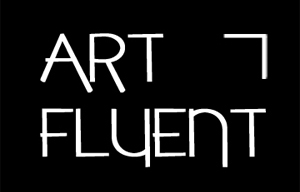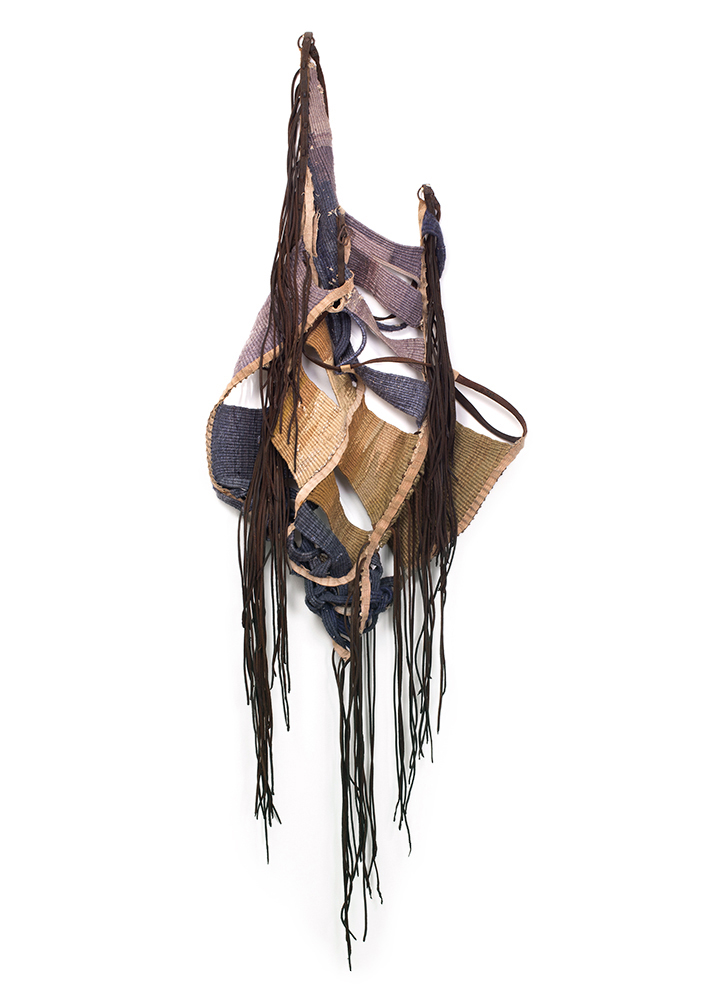
-Amy, we look forward to getting to know you and how you got to where you are today both personally and as an artist.
I began experimenting with fiber art as a teen in the 1970s, fascinated by the work of the now-iconic artists redefining the field, among them Shelia Hicks. Fear and lack of resources in the pre-internet Midwest made me discount a career as a fine artist. Instead, I studied graphic communications, becoming an art director before retiring early to invest more time in family.
A few years ago, I had the unexpected opportunity to see Hicks’ Lifelines retrospective — the first fiber exhibition I’d ever seen and the first time I’d thought about fiber art in decades — and felt an immediate connection.
Back home, I rediscovered a vintage horse fly net I’d purchased years earlier for its tactile appeal. At the time, I didn’t understand its function — keeping flies off horses — and I certainly didn’t see it kickstarting an artistic practice. But without easy access to any equipment, I found that its structure of horizontal ropes made tempting warp for the few spools of waxed linen I had laying around to serve as weft.
So I just began. It was intuitive, using muscle memory. At the time, I’d been caring for a father in declining health. In that, I felt an abstract correlation to the careful tending of an aged object. And I found that working on the vintage fly net, recalling the years spent weaving in my parents’ basement and the oversized memory of sporadic childhood trail rides, made me nostalgic. The slow process of weaving within and across its fixed borders allowed me space to begin to process the layers of my own history.
Autobiographic meditation has evolved into work that more broadly speaks to histories, loss, and longing. Increasingly, I think about the duality of nets and the sometimes-blurred boundaries between protection and entrapment, questioning the meaning of objects and our own conceptions of security.
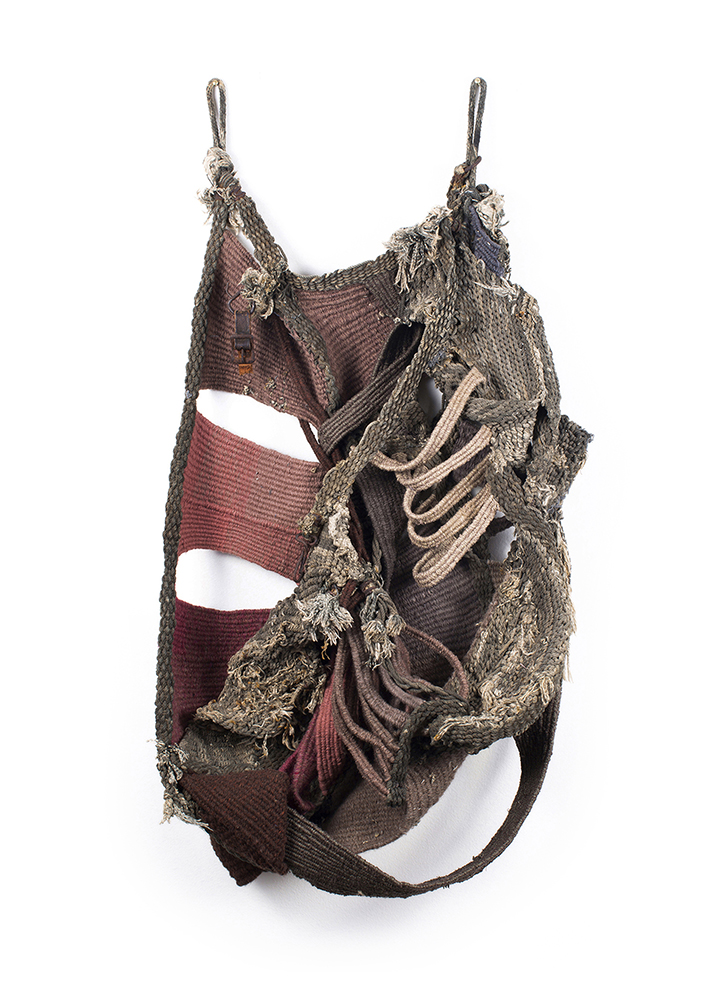
-What makes your process unique?
Aging nets, particularly horse fly nets, provide unlikely structures on which to weave. Their ropes are spaced farther apart than ideal, and they break at whim. Due to their fixed, sectioned warp, every part I weave affects the next, often unpredictably as I try to coax them into three-dimensional forms. These challenges make the process both rewarding and frustrating. Though I begin each piece with a specific memory or association evoked by the individual net, whether by its previous life or its worn characteristics, the materials often redirect me.
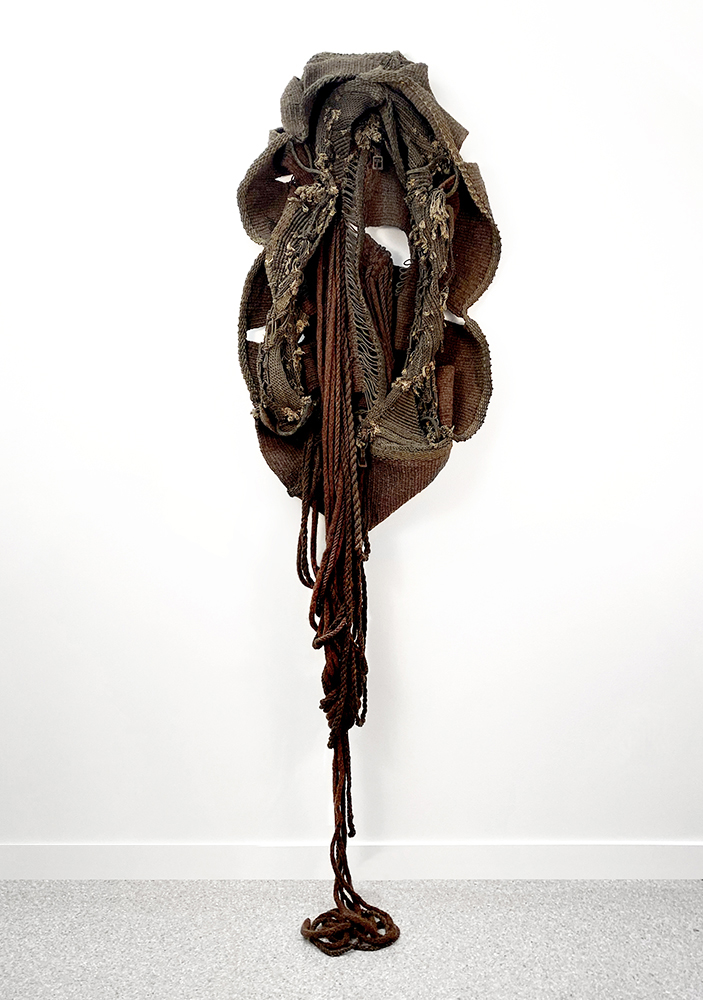
-As artists, we have all gone through waves of creative blocks. How have they appeared for you, and how have you moved past them?
My creative block, though I didn’t recognize it as such, lasted 40 years until the Hicks exhibit shook me back to my roots. My work has little to do with hers visually but she represents my formative weaving years, the last time I remember creating freely, for myself. Since starting my current practice, I’ve definitely had missteps – I’ve done plenty of deconstructing and have briefly set work aside – but so far, each piece has led to another. Because my process takes so long, with each sculpture morphing many times from beginning to end, I have ample time to ponder new ideas and directions.
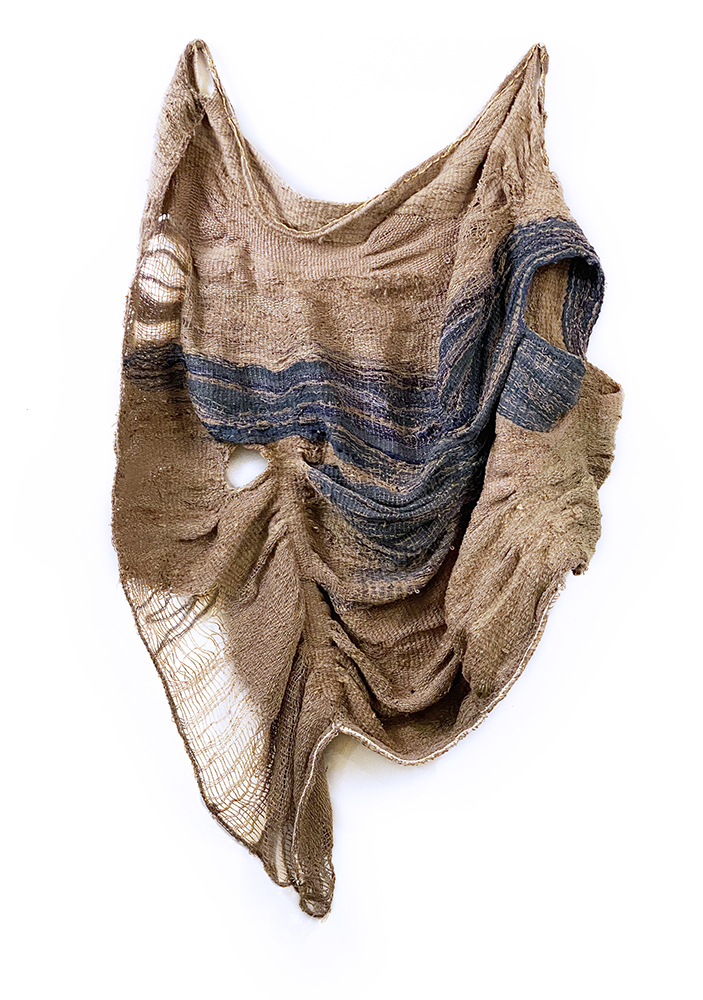
-What does it mean for you to push beyond your comfort zone?
Each piece puts the joy of creating at odds with the uncertainty of knowing how it will resolve given the predetermined structure of the fly net. The nets behave differently depending on age and condition. Some are limp, some elastic, some especially ragged; all insist on following the laws of gravity. Every design decision is intentional but I need to constantly pivot to accommodate the ever-narrowing options as the work moves toward its final shape. With each sculpture, I push through levels of anxiety and sometimes disappointment as I navigate the challenges that inevitably arise.
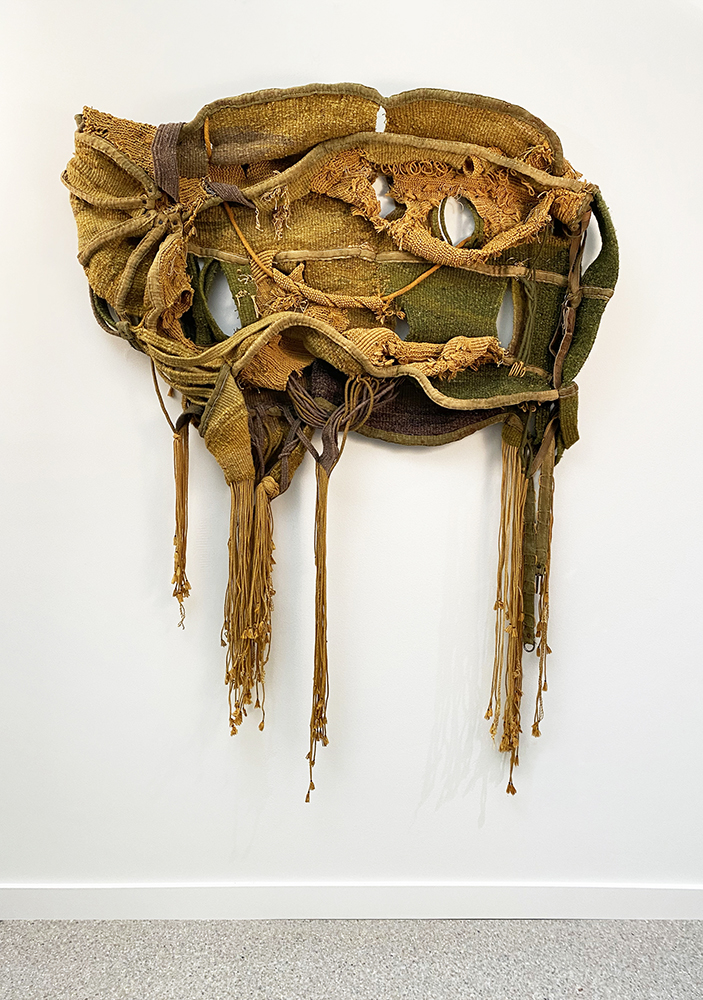
-What’s the best way for someone to check out your work and provide support?
Select work is on my website (www.amyusdin.com) and in the next few months I plan to open a web shop that will feature an extended series of woven fishing net fragments. I post exhibition information and work-in-progress details on Instagram (www.instagram.com/amyusdin).
Statement
My work redefines aging fiber artifacts — horse fly nets, fishing nets and similar vernacular forms — through needle-weaving and knotting. Their worn imperfections are integrated into the new and the transformation becomes part of a continued narrative. Absent their true histories, I imbue them with my own, their movement informed by the familial moments and unexpected associations that their previous lives evoke. Stripped of functional purpose, these once three-dimensional nets lay flat. By giving them new volume, I honor the revolving intersections of past and present. What began as autobiographic meditation has evolved into work that more broadly speaks to histories, loss and longing and exists in other realms of interpretive possibilities.
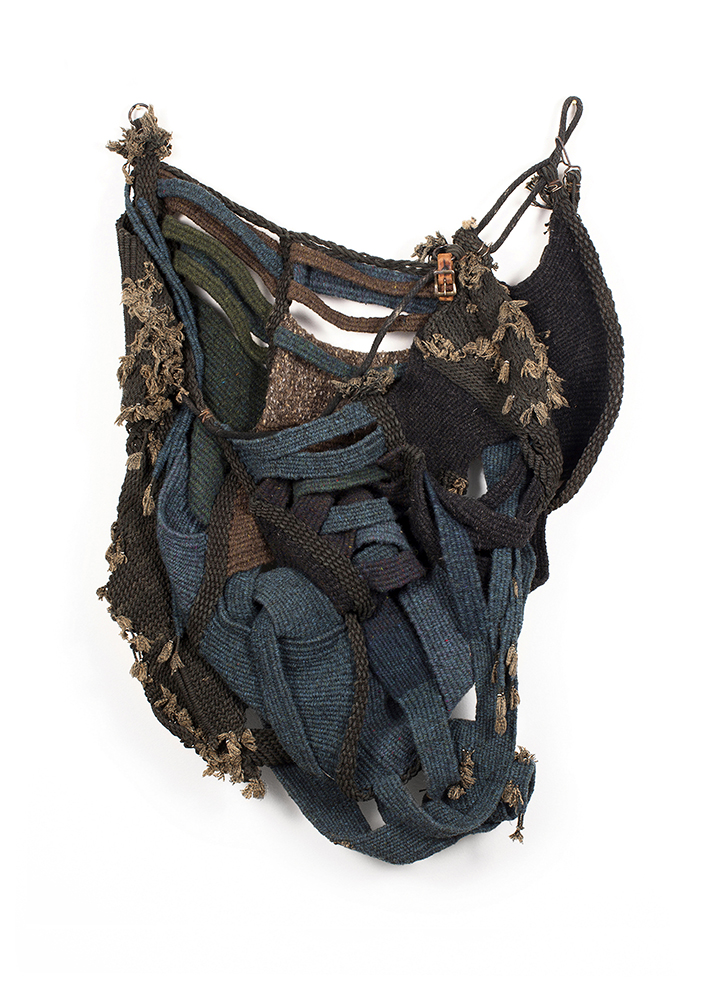
Bio
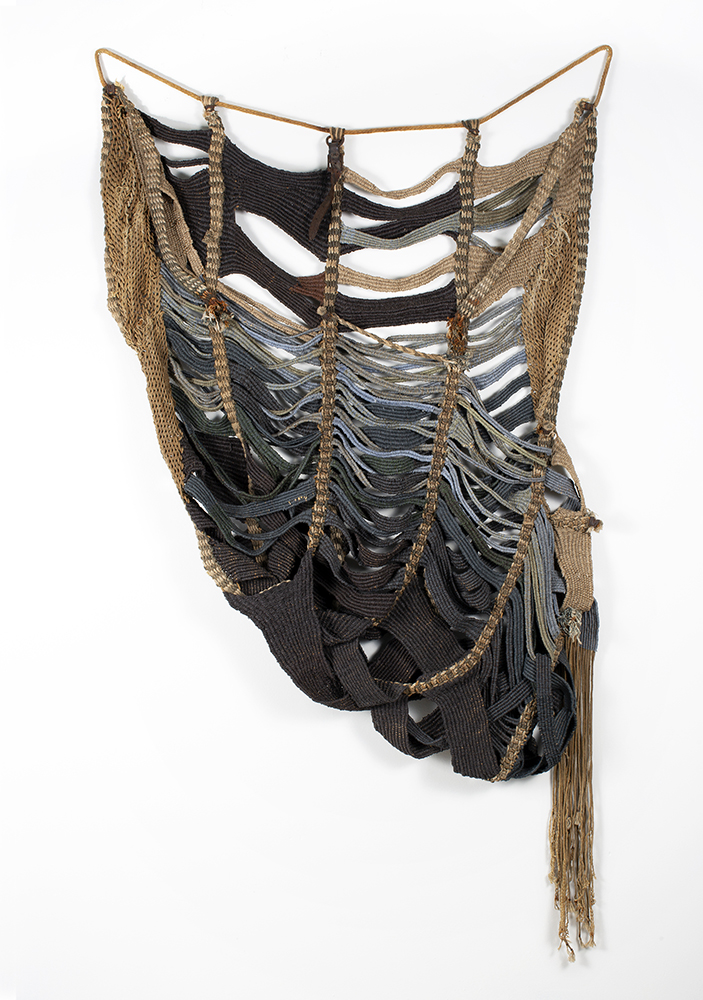
Minnesota artist Amy Usdin reclaims vintage fiber nets as armatures for sculptures that speak to memory, nostalgia and the meaning of objects. She exhibits locally and nationally with recognition including a 2020 Artist Initiative grant from the Minnesota State Arts Board and the 2019 Surface Design Award from the Surface Design Association’s International Exhibition in Print.
